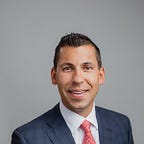How to Prepare for Early Retirement
Choosing the appropriate retirement age is a personal decision that involves factors such as health, financial preparation, and lifestyle requirements. Typically, leaving the workforce before age 65 is considered early retirement.
While seniors can begin collecting Social Security benefits at age 62, they are not eligible for full benefits until 66 or 67, depending on their birth year. Most individuals will need to supplement their Social Security earnings with savings, and they will not be eligible for Medicare until age 65. These are both important factors to take into account when calculating the potential for early retirement.
To make an informed decision about when to retire, individuals should first determine what their retirement will look like. Do they want to leave their full-time career but find a part-time job that provides supplemental income? Seasonal work, short-term employment, and entrepreneurship can all generate income and support an earlier retirement.
Many seniors who choose early retirement do so by substantially reducing spending. The amount of retirement savings required depends largely on spending level. A retiree who makes a mortgage payment, takes expensive trips, and eats out frequently will need to accumulate a large nest egg before retiring. Alternatively, a person may be able to retire earlier by keeping costs low and saving as much as possible.
Because no one can predict precisely how long retirement will last, financial professionals advise making conservative estimates. A basic retirement standard says that people who plan for 30 years of retirement should have 25 times their annual spending in invested assets. For example, someone who spends $50,000 annually should have $1.25 million in savings and investments to retire comfortably. Of course, retirees should also plan for potential one-time costs such as medical bills or home repairs, as well as the possibility of retirement income from hobbies or part-time jobs.
After determining a target savings goal, individuals should look at their contributions to tax-advantaged retirement accounts such as a 401(k), traditional IRA, or Roth IRAs. Beginning as early in their career as possible, they should make the maximum monthly contributions they can afford. Additionally, they can use after-tax investments such as real estate, selecting investments that are aligned with their risk tolerance and age.
Increasing income without increasing expenses helps retirees achieve their savings targets faster. If a job does not include the opportunity for advancement or promotion, individuals may be wise to seek jobs with the potential for higher earnings.
Another way to increase income and prepare for early retirement is by developing passive income streams. Investing actively earned income into stocks or real estate can grow wealth, as can royalties from intellectual property like online courses.
Individuals considering early retirement should know that they cannot access tax-advantaged retirement accounts until they are 59.5 years old. If they retire before this, they will need bridge income to support them in the interim. Bridge income can come from a brokerage account or savings, as well as from rental income or a pension.
Finally, health care costs play a role in early retirement. Because many employees receive health insurance through their jobs, retiring before Medicare eligibility at age 65 places them at risk of losing access to group discounts and health care access. The health insurance marketplace may offer an appropriate policy, although retirees may have higher premiums and out-of-pocket costs than they do with employer-based plans.
Speaking with a trusted financial advisor can help ensure a retiree has appropriate savings, investments, and health insurance to fund a long, content retirement.
